Welcome to the Lima Plaza Pollinator Garden!
The garden was conceived, designed and installed in 2019 by a group of Master Gardener volunteers. The purpose of the garden is to educate visitors on using low-water, native and pollinator-friendly plants in a home landscape setting. The garden was funded by a grant from the Colorado Garden and Home Foundation, donations from local nurseries and green industry partners including Alameda Wholesale Nursery, Keesen Landscape Management, O’Toole’s Garden Centers, Pioneer Landscape Center, Tagawa Gardens, Wilmore Outdoor Living Center and private donations from Master Gardener volunteers. Master Gardener volunteers received support from the Arapahoe County Planning and Zoning and the Fleet and Facilities departments to complete the installation.
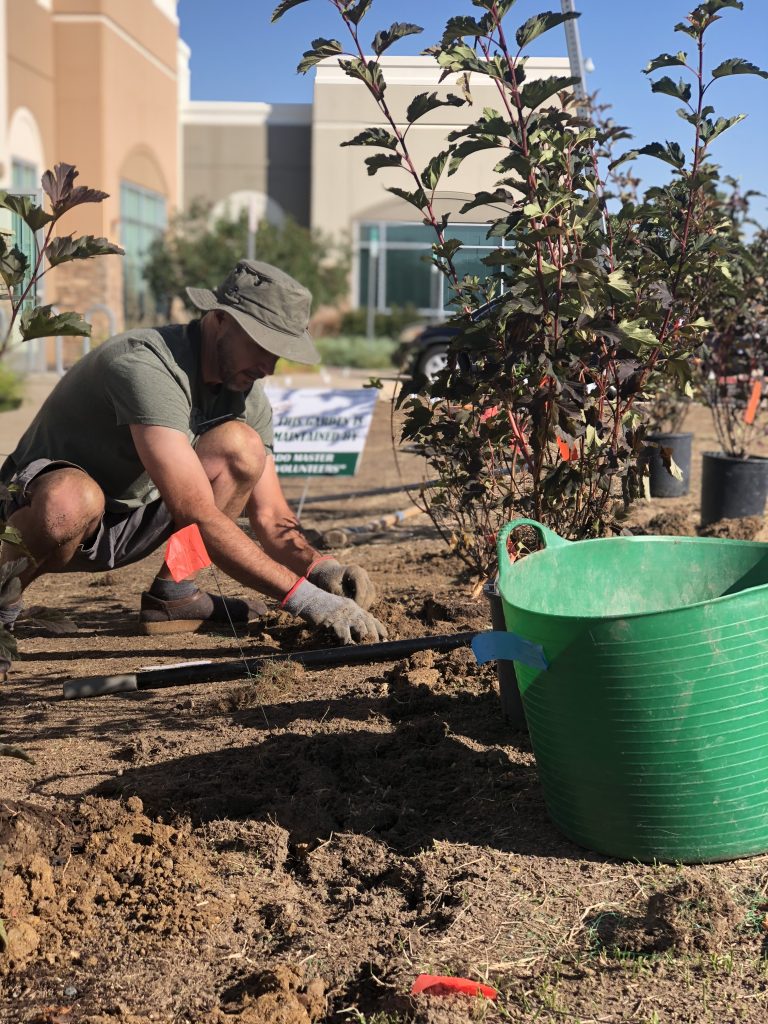
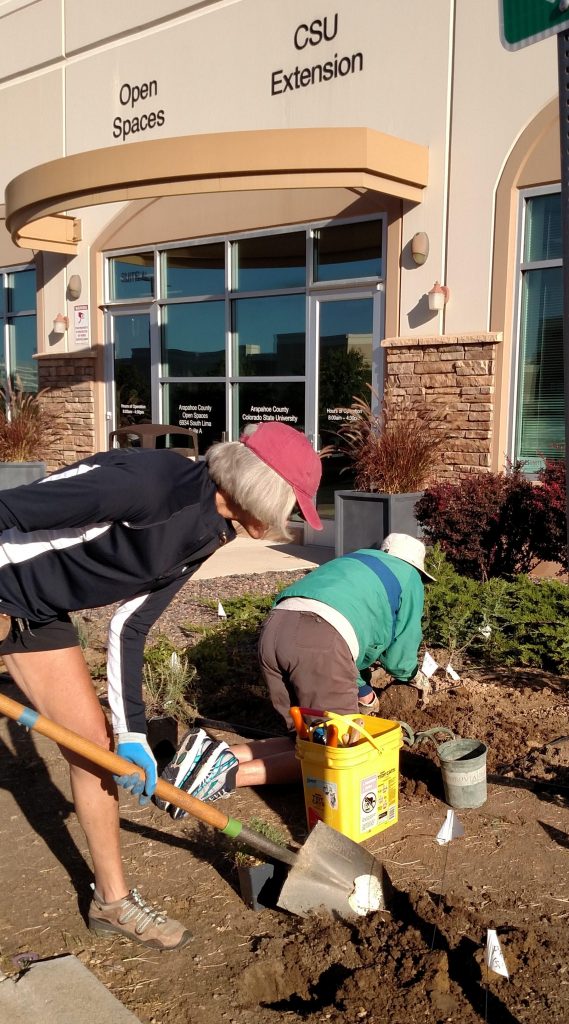
Installation
Approximately 2500 square feet of turf was removed from the site. Volunteers planted over 60 different species of shrubs, perennials and ornamental grasses at the site during the fall of 2019. Soil amendments were not used, except in the case of adding squeegee to improve drainage in some locations. The beds were not tilled. Drip irrigation was added to two of the beds. Two beds have no irrigation. Plants in the un-irrigated beds were hand-watered monthly through establishment. To preserve soil moisture, rock mulch (using two sizes of rock) at 1 ½” thick was installed in the southeast, near west and far west beds. Wood mulch at 1 ½” thick was installed in the east bed. A dry streambed was installed to accommodate drainage. The site is very windy, common with locations in the eastern half of Arapahoe County.
The Plants
The garden is designed to promote 4 seasons of interest, and 3 seasons of bloom to support pollinator populations. Some plants mentioned will change as the garden evolves with climate, snow removal activities and our hungry rabbit friends.
In the spring look for…
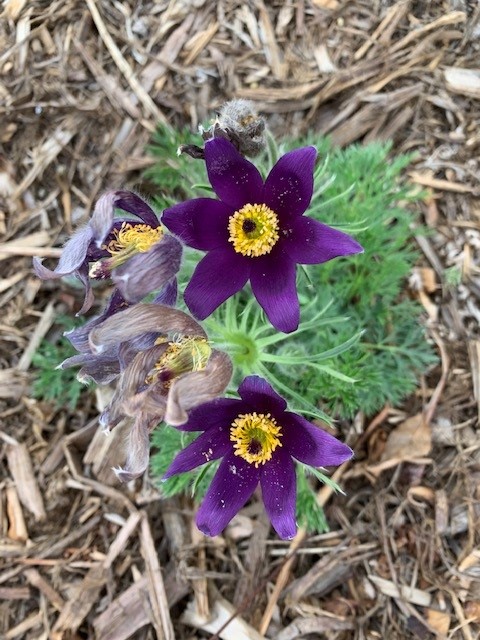

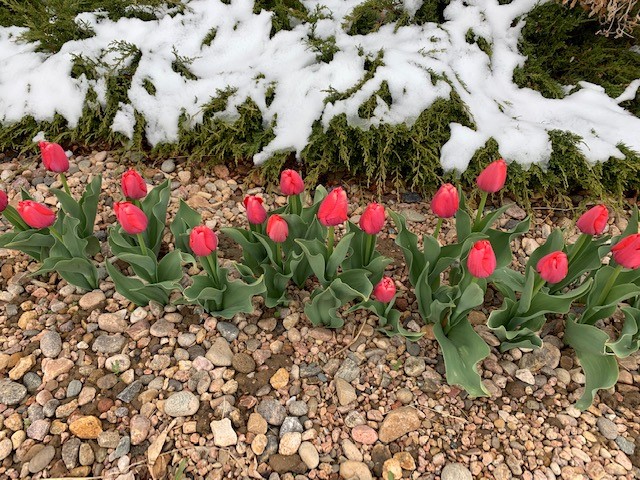
In the summer notice the…..
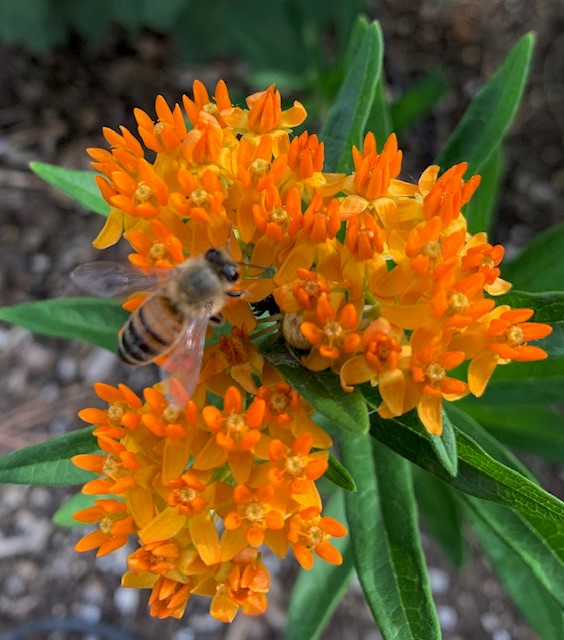

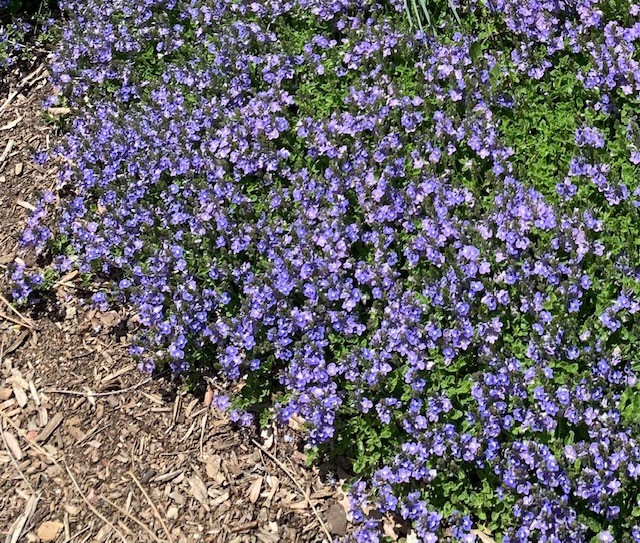
In the fall you will see…..



Smaller Gardens
Do you have a smaller space? Grow pollinator-friendly plants in containers. Plants are replanted each spring and vary by availability.

The Pollinators
Approximately 75% of 240,000 plant species world-wide rely on insects for reproduction. Over 80 food crops including fruits, vegetables, and nuts require insects for pollination. Important agricultural forage crops including alfalfa and clover need pollinators. In addition to food crops, we receive other commodities from pollinators such as fibers, oils, medicines, and other products. Butterflies, bees and other insects need a connected pathway for food and shelter during the summer season. Migratory species such as the monarch butterfly also benefit from connected pathways. Across the United States, rapid growth and development have significantly increased areas of hardscape and reduced habitat. While you stroll the garden, look for hummingbirds, native bees, honey bees, butterflies, and other beneficial insects.
Native bees and honey bees are among the most efficient pollinators because they have hairs on their body that easily catch and hold pollen. Approximately 20,000 bee species exist worldwide. In Colorado, we have over 900 bee species. With the exception of the honey bee, all wild bees nest underground or in cavity tunnels. Wild bees are at risk for population decline. Honey bees are a non-native but a critical pollinator for agricultural crops. They are a managed species similar to livestock. Since they are managed, they are not at risk of going extinct for declining in population. The population of honey bees depends on the number of beekeepers in your area. Honey bees do face a variety of challenges including the varroa mite, a parasite the decreases hive health quickly. Read more about bees here.
Butterflies are a welcome visitor to gardens. Colorado has approximately 250 species of butterflies. Some species are migratory like the painted lady (Vanessa cardui) and the monarch (Danaus plexippus). The best way to attract butterflies to your garden is providing the caterpillar host plant for a specific species. Each species has a different caterpillar host plant. For instance, black swallowtail caterpillars (Papilio polyxenes) feed on dill and fennel. Two-tailed swallowtail caterpillars (Papilio multicaudata) feed on green ash trees and chokecherry. Monarch butterflies (Danaus plexippus) feed on milkweed. Click here to learn more about butterflies.
Hummingbirds are another common flower visitor. In Colorado, four species of hummingbirds are likely to visit your gardens. These birds are migratory and return to Colorado in mid-April. While hummingbird feeders are popular, the best ways to attract hummingbirds are to plant flowers that are red, long, and tubular. Hyssop and scarlet gilia are great examples. Hummingbirds also feed on insects. Flowers that have nectar to attract other insects can also provide a food source for hummingbirds. Click here to learn more about hummingbirds.
Colorado also has other pollinators that include flower-visiting flies, moths, beetles, and some species of wasps. Bats are an important pollinator in many parts of the world. In Colorado, bats primarily feed on insects which provides valuable pest control services.

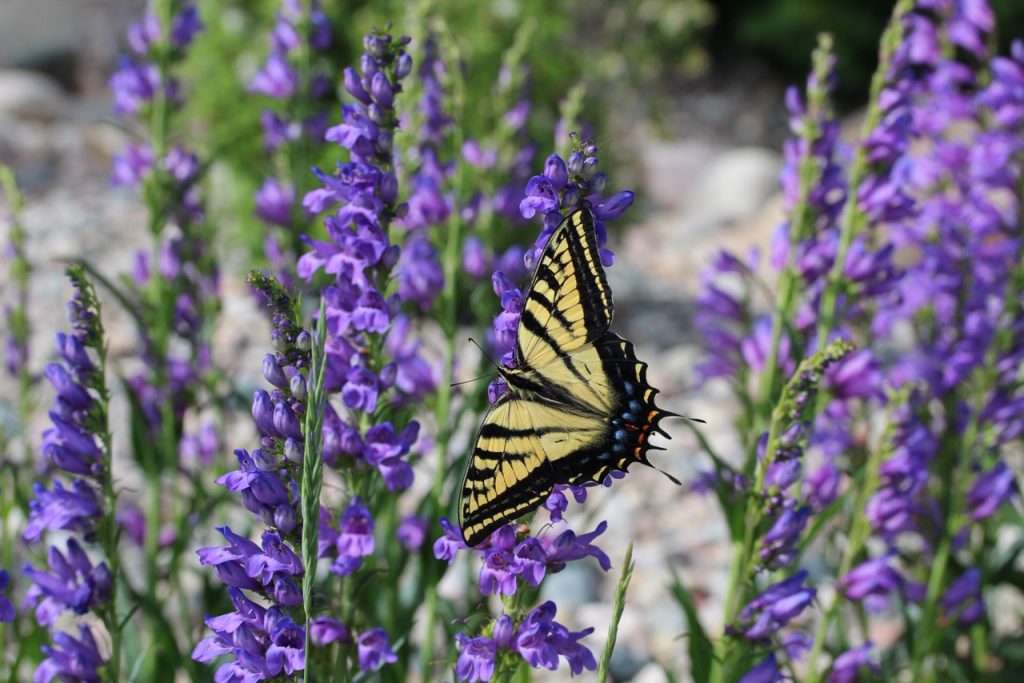

The Habitat
Two native bee houses are located on the north end of the east bed. Those are restocked in the fall with new tubes for the season’s inhabitants. Three trees – a ‘Tannenbaum’ mugo pine, Pinus mugo, a ‘Fat Albert’ blue spruce, Picea pungens and a chokecherry, Prunus virginiana were added to provide wildlife habitat. Both birds and bees can drink and clean in a shallow bowl with rock perches filled with water. In your garden, consider adding a variety of diverse food sources for the animals you want to attract – flowers for nectar provides carbohydrates and pollen provides protein. Adding shelter in the form of nesting boxes or bushy trees and shrubs and water in the form of a bird bath, stream, or pond makes your garden an attractive destination for pollinators.
Maintenance
During each growing season, April through October, Master Gardener volunteers visit the garden twice a month to provide supplemental water as needed and to perform weeding chores. Winter watering is done once a month, when needed. In order to protect the pollinators, no herbicides or pesticides are used in the garden. The plants are deadheaded as appropriate during the season to promote repeat bloom but are left to go to seed and self-sow.
Additional Education
Watch for announcements of upcoming classes at the Garden. Native Plant Masters also offer classes of related interest. Registration information can be found on https://FoothillstoPlainsNPM.eventbrite.com. The garden is also a site for the Native Bee Watch program. To learn more about this program, click here: NativeBeeWatch.org
To Learn More
Check out these fact sheets for more information on creating your own pollinator garden:
Attracting Butterflies to the Garden – 5. 504
Attracting Native Bees to your Landscape – 5.615
Creating Pollinator Habitat – 5.616
Native Herbaceous Perennials – 7.242
Horticulture Resources
- Garden Buzz Archives
- CSU Extension Resources
- Colorado Master Gardener Program
- Foothills to Plains Native Plant Master Program
- Native Bee Watch Community Science Program
- The Co-Hort Blog
- PlantTalk Colorado
- Soil Testing
- Plant Select
- Emerald Ash Borer
- Japanese Beetle
- Colorado State Forest Service
- Ask an Expert



